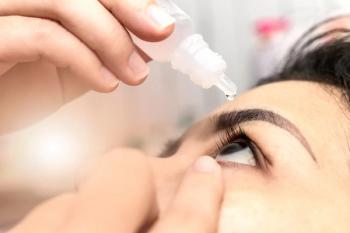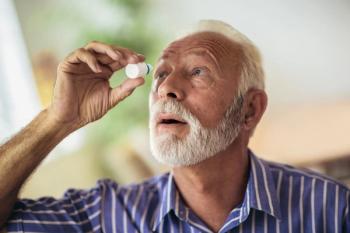
AAOpt 2025: Comparing dry eye drops for patient comfort, adverse effects
Eric Schmidt, OD, FAAO, details a poster presentation given during AAOpt's Academy 2025 meeting.
Eric Schmidt, OD, FAAO, president of Omni Eye Specialists in Wilmington, North Carolina, presented a critical study addressing the ongoing confusion surrounding prescription dry eye drops. The research aimed to provide clarity on whether different cyclosporine-based drops are truly interchangeable, a question that has long perplexed prescribing optometrists. Due to the lack of head-to-head clinical studies, Schmidt conducted a meta-analysis of phase 3 clinical trial data. This innovative approach allowed for a comprehensive comparison of five different prescription drops by applying consistent analytical criteria across multiple studies. The study focused on 3 primary evaluation metrics:
Corneal staining improvement
The research revealed significant variations in how different drops affected corneal staining. Not only did the drops differ in their ability to reduce staining, but they also showed marked differences in the speed of improvement. This finding challenges the assumption that all dry eye drops perform equally.
Patient comfort
By examining burning and stinging sensations upon drop installation, the study highlighted substantial differences in patient experience. This aspect is crucial, as patient comfort directly impacts treatment adherence and overall satisfaction.
Adverse effects
The meta-analysis comprehensively assessed total adverse effects, emphasizing the critical medical principle of "do no harm." By comparing relative risks across different drops, the study provided insights into potential side effects and treatment safety.
The most significant conclusion was that prescription dry eye drops are not interchangeable, contrary to what insurance companies might suggest. Each drop has unique characteristics that make it more or less suitable for specific patients. Schmidt's research provides prescribing doctors with valuable guidance, encouraging them to select drops based on individual patient needs rather than insurance coverage or convenience.
Schmidt said the study can empower healthcare professionals to make more informed, personalized treatment decisions. The ultimate goal is to improve patient care by matching the most appropriate dry eye drop to each individual's specific condition, potentially enhancing treatment outcomes and patient comfort.
Newsletter
Want more insights like this? Subscribe to Optometry Times and get clinical pearls and practice tips delivered straight to your inbox.
















































.png)


